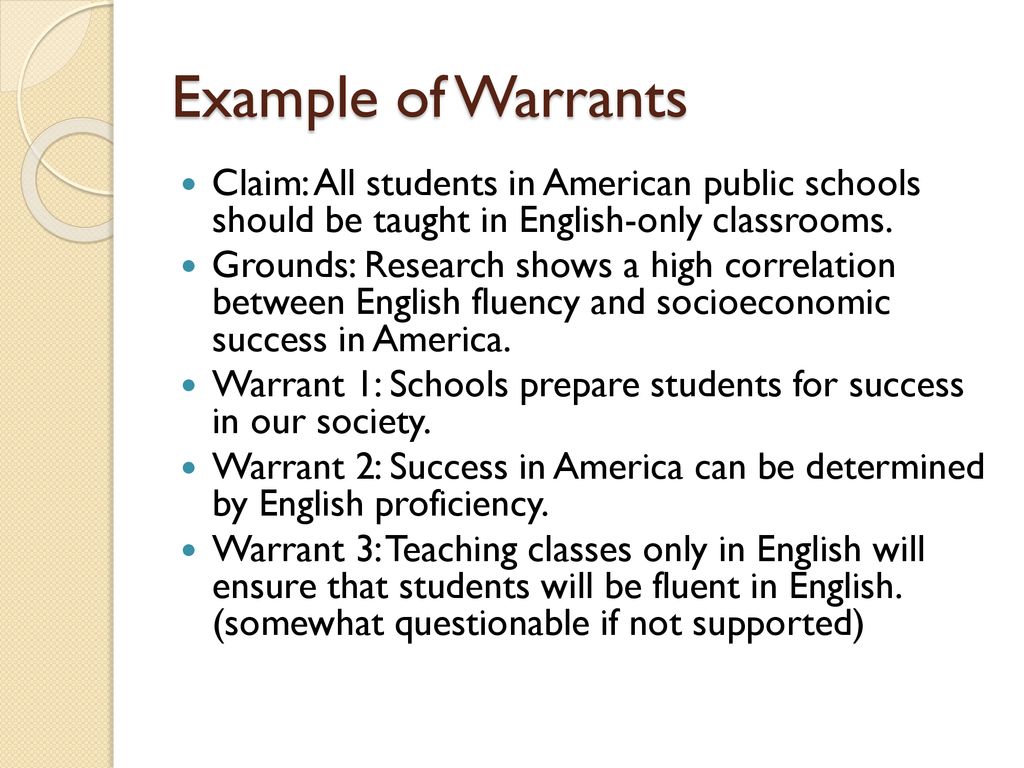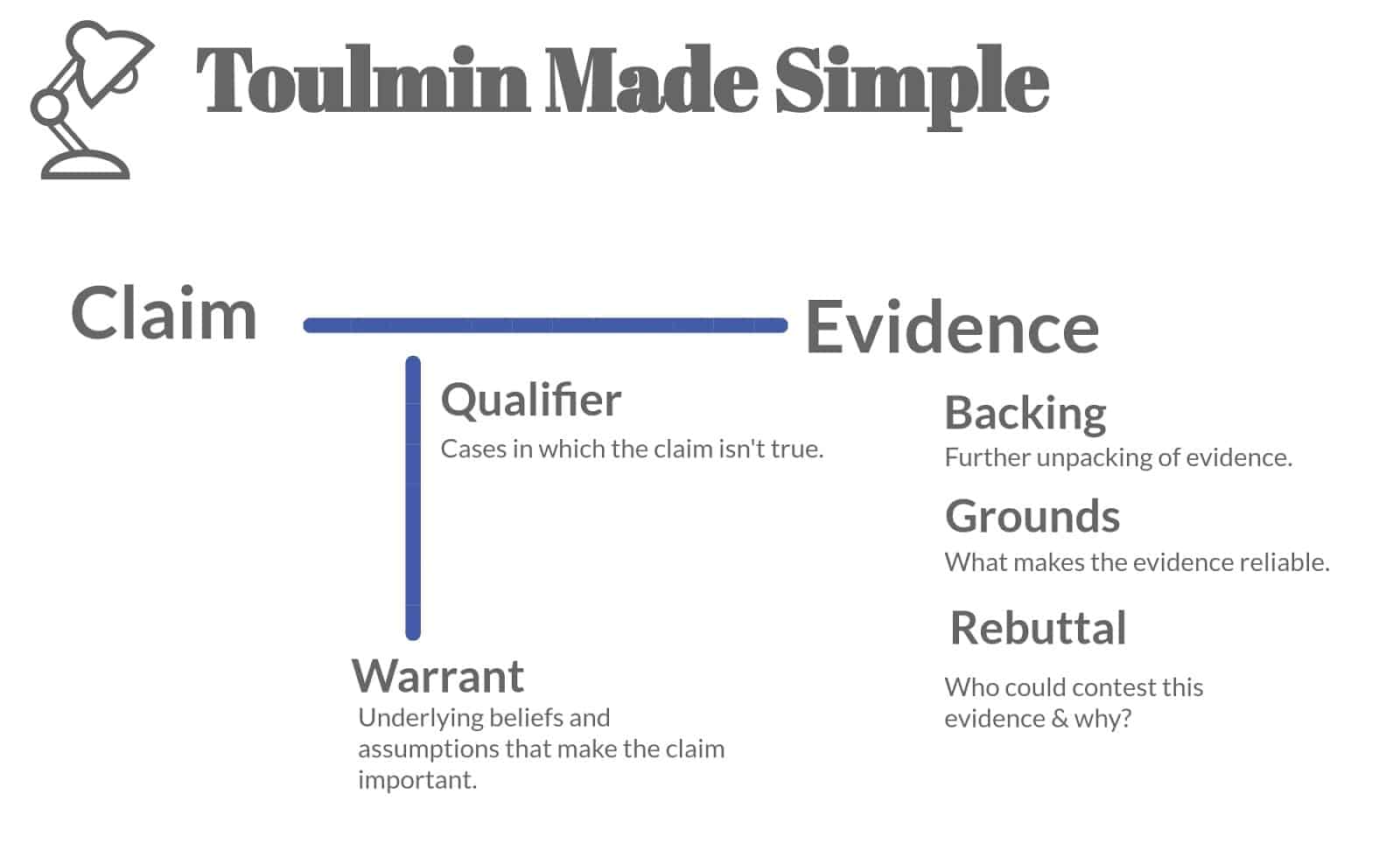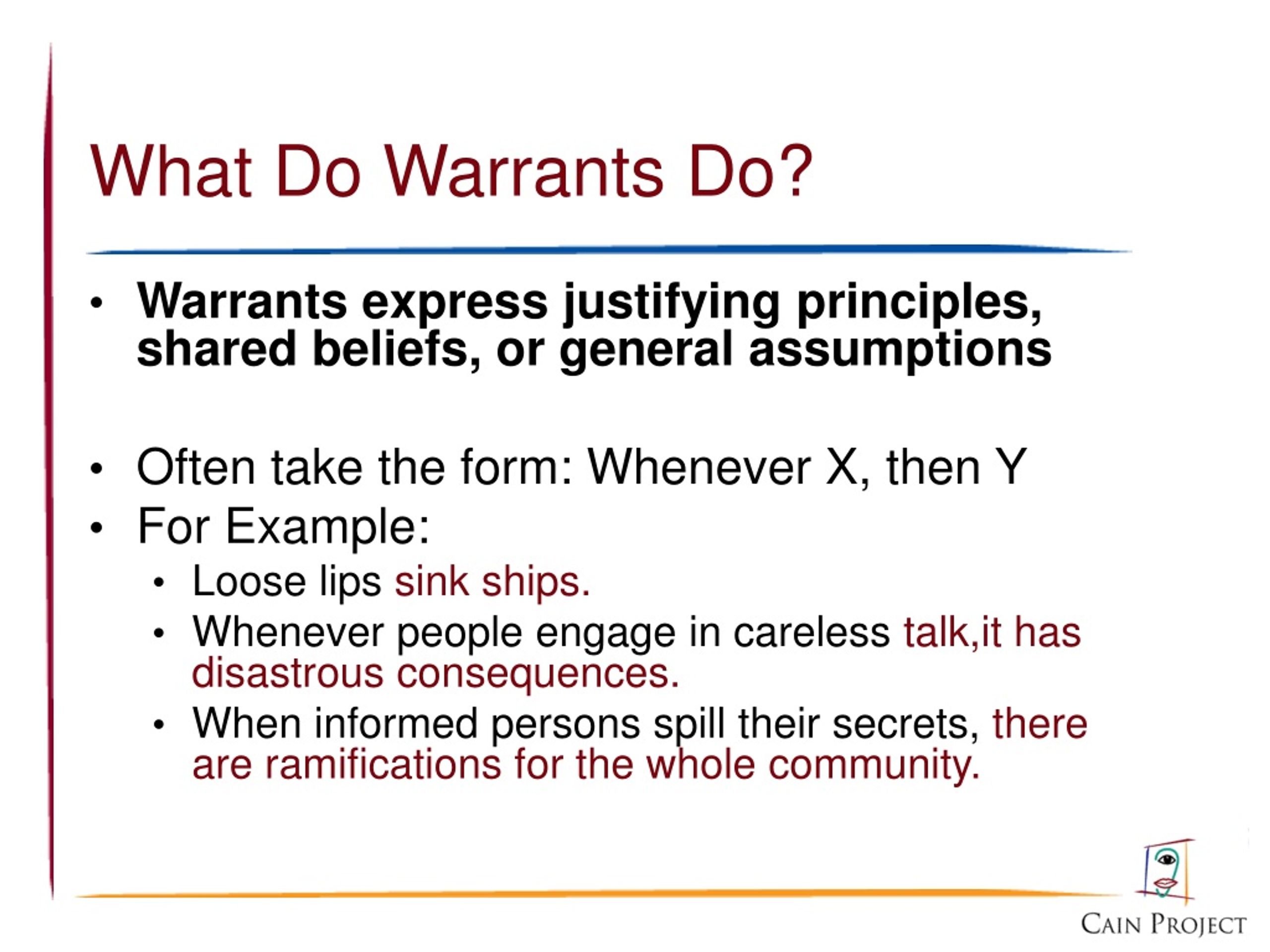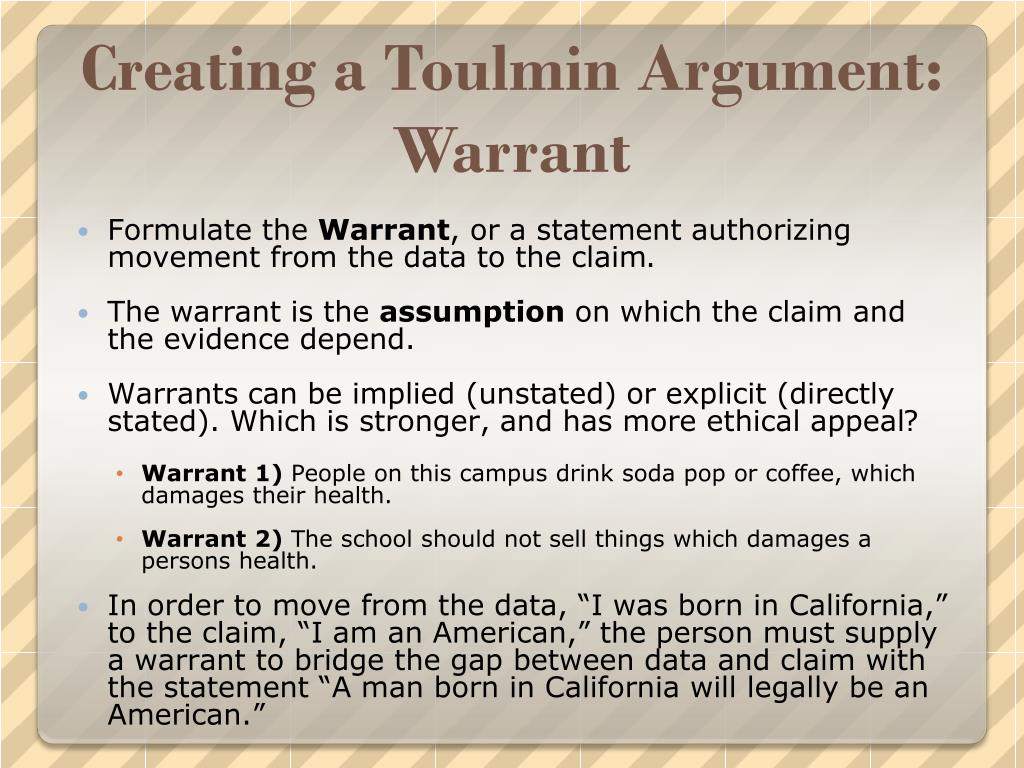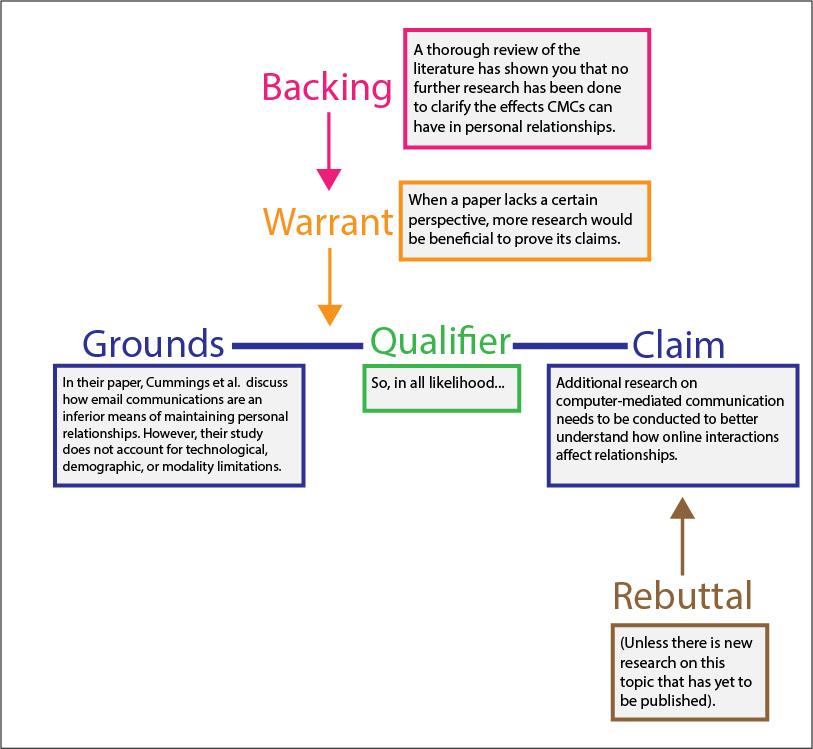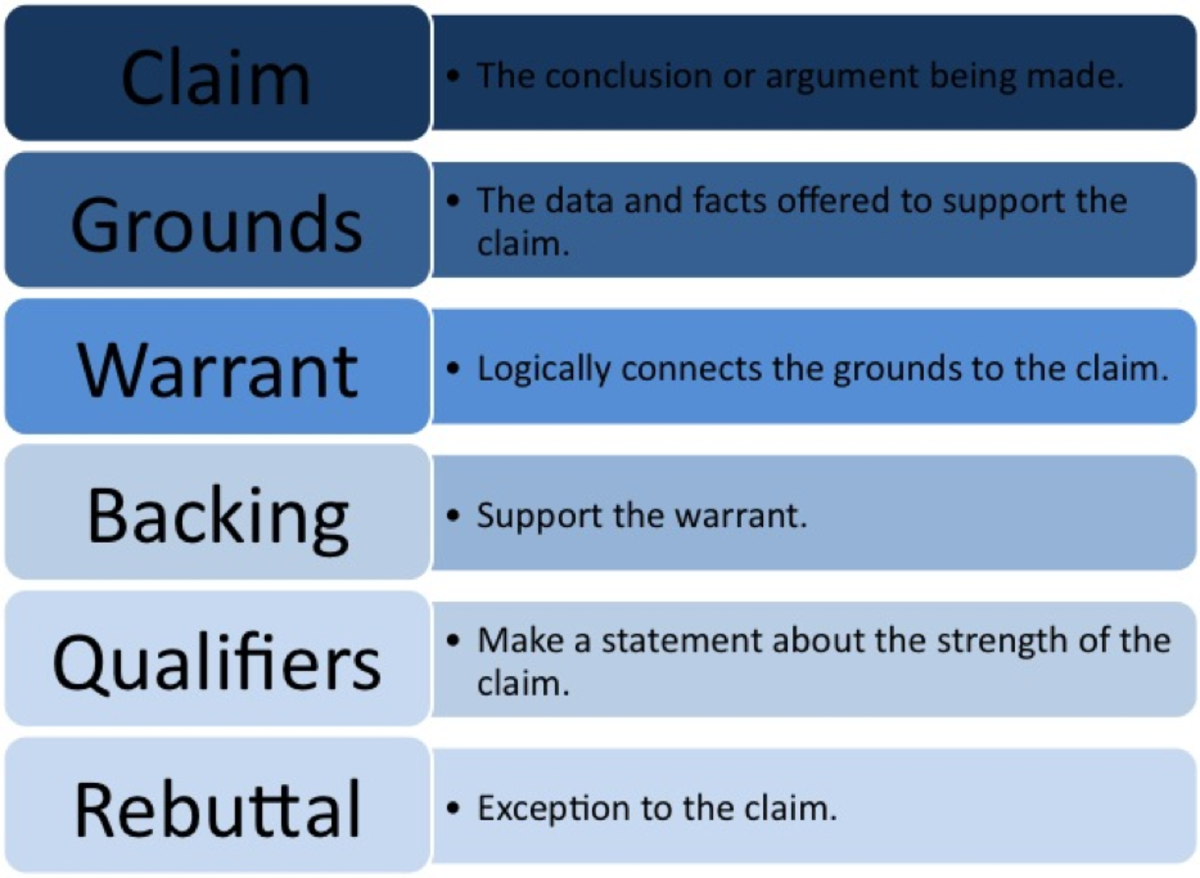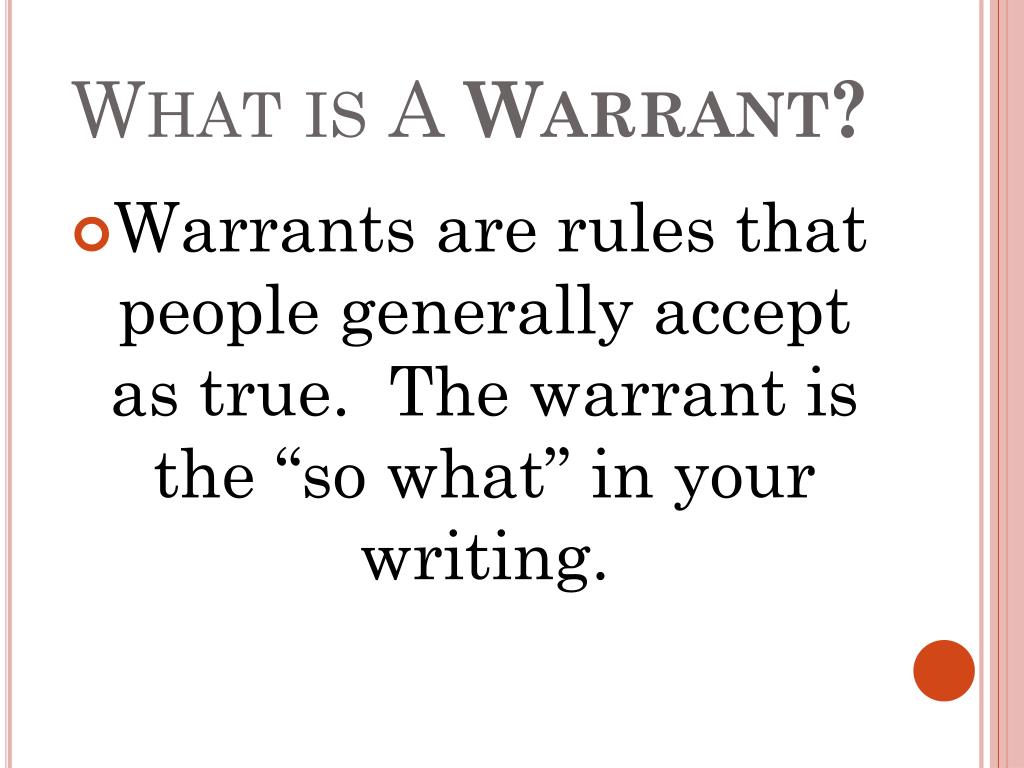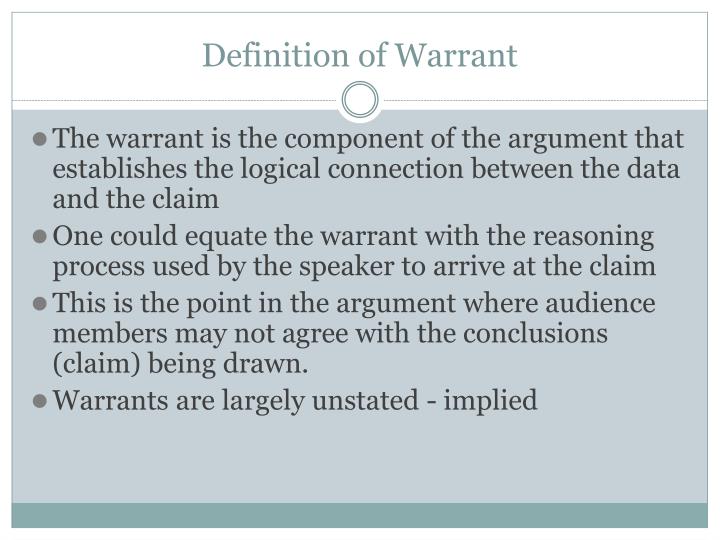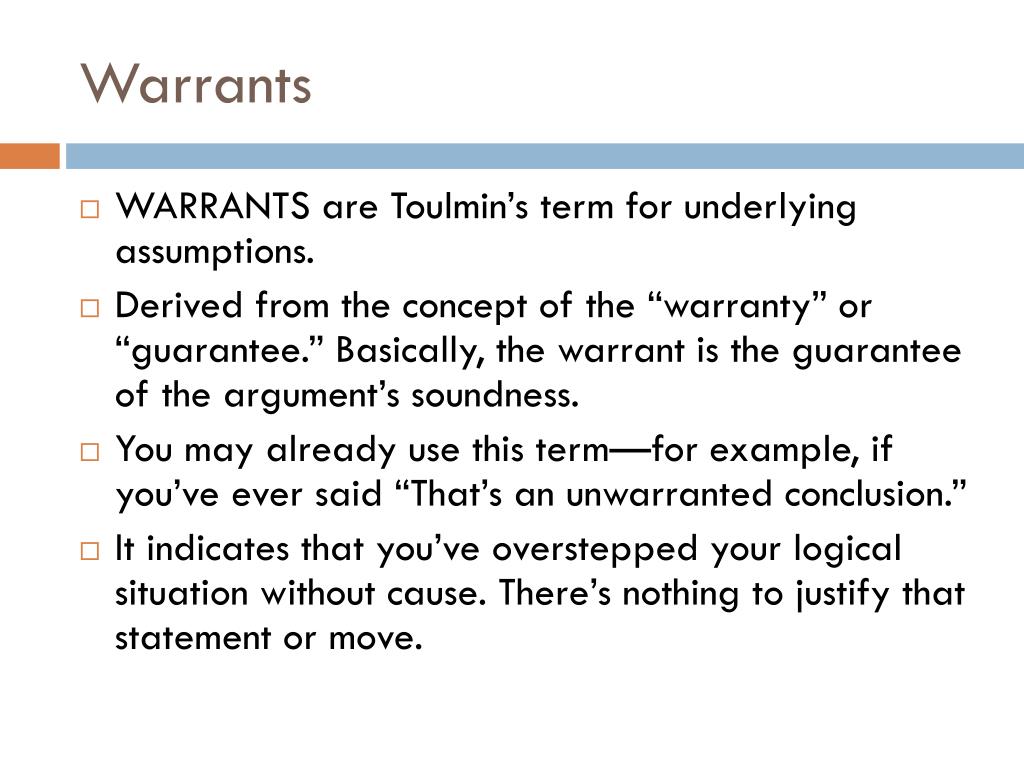Warrant In Argument
Warrant In Argument - The claim, the grounds, and the warrant. Second, test and critique your own argument. First, analyze your sources by identifying the basic elements of the arguments being made. They are like explanations that we know to be true (or think. In toulmin’s method, every argument begins with three fundamental parts: Warrants may be based on logos, ethos or pathos, or values that are assumed to be shared with the listener. In many arguments, warrants are often. A claim is the assertion that. Warrants, they say, let[.] you connect a particular claim to particular evidence validly.
Second, test and critique your own argument. In toulmin’s method, every argument begins with three fundamental parts: They are like explanations that we know to be true (or think. Warrants, they say, let[.] you connect a particular claim to particular evidence validly. In many arguments, warrants are often. A claim is the assertion that. The claim, the grounds, and the warrant. Warrants may be based on logos, ethos or pathos, or values that are assumed to be shared with the listener. First, analyze your sources by identifying the basic elements of the arguments being made.
Second, test and critique your own argument. A claim is the assertion that. First, analyze your sources by identifying the basic elements of the arguments being made. They are like explanations that we know to be true (or think. In many arguments, warrants are often. Warrants, they say, let[.] you connect a particular claim to particular evidence validly. Warrants may be based on logos, ethos or pathos, or values that are assumed to be shared with the listener. The claim, the grounds, and the warrant. In toulmin’s method, every argument begins with three fundamental parts:
The Toulmin Model of Argument ppt download
A claim is the assertion that. Warrants may be based on logos, ethos or pathos, or values that are assumed to be shared with the listener. They are like explanations that we know to be true (or think. The claim, the grounds, and the warrant. Second, test and critique your own argument.
How to Build Strong Argumentation by Using the Toulmin Method
They are like explanations that we know to be true (or think. Second, test and critique your own argument. A claim is the assertion that. Warrants may be based on logos, ethos or pathos, or values that are assumed to be shared with the listener. First, analyze your sources by identifying the basic elements of the arguments being made.
PPT Writing Module Three Five Essential Parts of Argument PowerPoint
Warrants, they say, let[.] you connect a particular claim to particular evidence validly. Warrants may be based on logos, ethos or pathos, or values that are assumed to be shared with the listener. The claim, the grounds, and the warrant. In toulmin’s method, every argument begins with three fundamental parts: A claim is the assertion that.
PPT Three Types of Arguments PowerPoint Presentation, free download
First, analyze your sources by identifying the basic elements of the arguments being made. Second, test and critique your own argument. A claim is the assertion that. In many arguments, warrants are often. Warrants may be based on logos, ethos or pathos, or values that are assumed to be shared with the listener.
Toulmin's Argument Model
In toulmin’s method, every argument begins with three fundamental parts: First, analyze your sources by identifying the basic elements of the arguments being made. Warrants may be based on logos, ethos or pathos, or values that are assumed to be shared with the listener. Second, test and critique your own argument. The claim, the grounds, and the warrant.
Read The Claim. Then Explain The Warrant
First, analyze your sources by identifying the basic elements of the arguments being made. A claim is the assertion that. They are like explanations that we know to be true (or think. Warrants may be based on logos, ethos or pathos, or values that are assumed to be shared with the listener. The claim, the grounds, and the warrant.
PPT Argumentative Writing Based upon the Stephen Toulmin Model For
Warrants, they say, let[.] you connect a particular claim to particular evidence validly. The claim, the grounds, and the warrant. A claim is the assertion that. First, analyze your sources by identifying the basic elements of the arguments being made. In toulmin’s method, every argument begins with three fundamental parts:
Toulmin’s Argument Model ppt download
They are like explanations that we know to be true (or think. First, analyze your sources by identifying the basic elements of the arguments being made. Warrants, they say, let[.] you connect a particular claim to particular evidence validly. Second, test and critique your own argument. A claim is the assertion that.
PPT Toulmin’s Model of Argumentation PowerPoint Presentation ID1102469
A claim is the assertion that. First, analyze your sources by identifying the basic elements of the arguments being made. The claim, the grounds, and the warrant. In many arguments, warrants are often. Warrants, they say, let[.] you connect a particular claim to particular evidence validly.
PPT The Logical Structure of Arguments PowerPoint Presentation, free
First, analyze your sources by identifying the basic elements of the arguments being made. A claim is the assertion that. They are like explanations that we know to be true (or think. In many arguments, warrants are often. Warrants, they say, let[.] you connect a particular claim to particular evidence validly.
In Toulmin’s Method, Every Argument Begins With Three Fundamental Parts:
They are like explanations that we know to be true (or think. A claim is the assertion that. Second, test and critique your own argument. The claim, the grounds, and the warrant.
Warrants May Be Based On Logos, Ethos Or Pathos, Or Values That Are Assumed To Be Shared With The Listener.
Warrants, they say, let[.] you connect a particular claim to particular evidence validly. In many arguments, warrants are often. First, analyze your sources by identifying the basic elements of the arguments being made.
